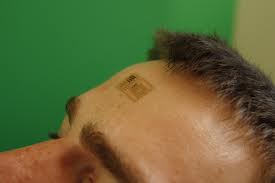Electronic skin, a new invention is considered “a key demonstration that high-performance electronics can be designed to mechanically mimic biological tissues and yet function reliably. It will be likely to help in designing unnoticeable yet high-tech wearable systems”, according to Stéphanie Lacour, an engineer at the University of Cambridge, UK.
An international team of researchers has reported their findings about a tiny, wireless patch of “electronic skin”. This device has been developed that records heartbeats, brain activity and muscle contractions as accurately as bulky conventional electrodes.
The patch, which is less than 40 micrometres thick, no thicker than a human hair, is created by John Rogers, a materials scientist at the University of Illinois, Urbana-Champaign, and his colleagues. The device is far more flexible than the brittle, millimetre-thick silicon chips that comprise most electronics. It consists of sensors, antennae, light-emitting diodes and other components, sandwiched between two protective layers. It is powered by embedded solar cells or by inductive coils that can be used to generate current wirelessly.
The device is flexible enough to move with the skin and stick to skin without adhesives. It has remained in place for up to 24 hours. But according to Rogers, while normal shedding of skin cells would eventually cause the monitors to come off, the devices could remain in place as long as two weeks.
The electronic skin can monitor brain waves, muscle movement, sense the larynx for speech, emit heat to help heal wounds and perhaps even be made touch sensitive and placed on artificial limbs, which conventional medical sensors cannot.
Moreover, the electronic skin is hoped to help people with laryngeal diseases communicate, to monitor premature babies, to enhance the control of prosthetics and induce muscle contractions in regions of the body that have degenerated.
This device is being developed by adding new components, including piezoelectric devices that are powered by body movements, batteries, and wireless communicators for uploading data or commands.
The researchers also hope one day it could allow doctors to monitor patients’ health without wires or clunky equipment. At present, this device is expensive but they expect that the patches could eventually be mass-produced and its will cost less.

